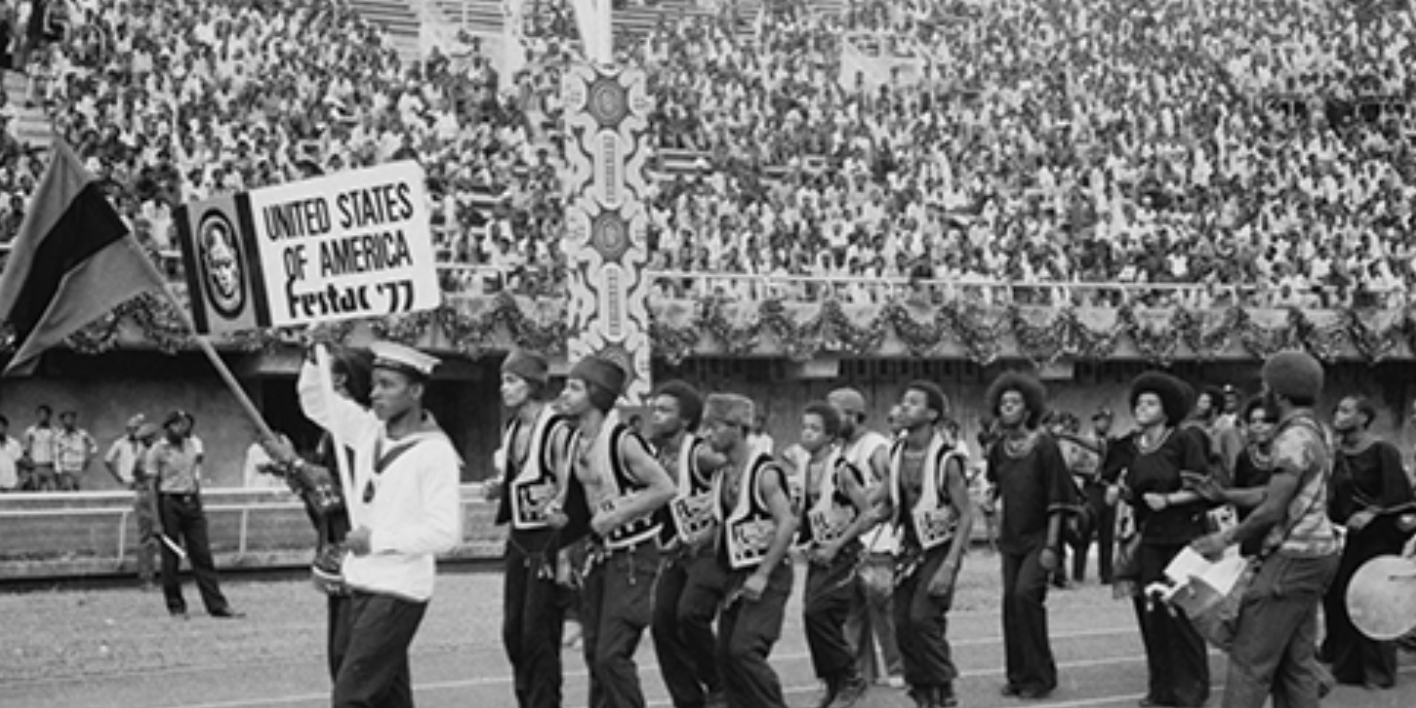The Ties that Bind: Exploring the Connection between the South Side and the Pan-Africanism Movement
Yesomi Umolu, Logan Center Exhibitions Curator, is no stranger to uniting worlds both academic and artistic in her exhibitions. Her current project, The Ties that Bind: Waves of Pan-Africanism in Contemporary Art and Society is a multi-year research project funded by the Andy Warhol Foundation. The project recently completed its first year of activity with the public forum, Returns (Oct 13-19). Two more public forums will take place at the Logan Center in the coming years, entitled Nonalignment and Horizons.
The Ties that Bind is concerned with Pan-Africanism, which Umolu defines as a “socio-political movement that emerged at the turn of the 20th century across different locations across the world,” born from “a desire of members of the African Diaspora to find political agency in the face different forms of oppression, whether it be colonialism or other imperial forms of oppression, and a way of building solidarity.”
Umolu was drawn to the research topic as a way to “merge the character and DNA of the South Side with my own curatorial interests, internationally.” Given Umolu’s background in working internationally with African artists, especially in West Africa, uniting the concept of Pan-Africanism and the history of Chicago’s South Side was a no-brainer, especially given the historical relationship between Pan-Africanism and the South Side.
Notable figures in the history of the South Side played key roles in bringing the ideals of Pan-Africanism to Chicago. South Side native and poet laureate Gwendolyn Brooks, who traveled frequently to Africa, brought back objects, stories, and new perspectives that then informed the local art and culture scene. Umolu also notes that the teachings and writings of controversial activist Marcus Garvey were influential on the South Side at the turn of the 20th-century and into the 1930s.
The Ties that Bind is organized thematically in order to explore different aspects of the project while also incorporating public thought and opinion. The narrative of Returns, the first public congress of the exhibition, considers the idea of returning to the place, history, and culture of Africa as a key driving force in the development of Pan-African thought and aesthetics. The second public congress, Nonalignment, will take into account resistance towards the reductive tendencies of Pan-Africanism. Finally, Horizons will explore contemporary trends and connections across the African diaspora.
One the most notable aspects of the project is the incorporation of public thought into Umolu’s research process. It was important to Umolu that this project be just as much an exploration of process, and she embarked on The Ties That Bind with a conscious desire to conduct a curatorial research in a public setting. As the project unfolds, Umolu notes that “I don’t go away to my office and library, and then three years later an exhibition materializes; there is a means to follow someone through this process.”
By structuring the three public forums thematically, Umolu believes, the public will be able to explore each thematic element, attend interactive panels and events, and connect with local and international artists and be a part of the exhibition itself. Ultimately, “there is a whole narrative”: that we are connected to beyond the South Side and the University of Chicago.
To learn more about The Ties That Bind, visit tiesthatbind.uchicago.edu.

